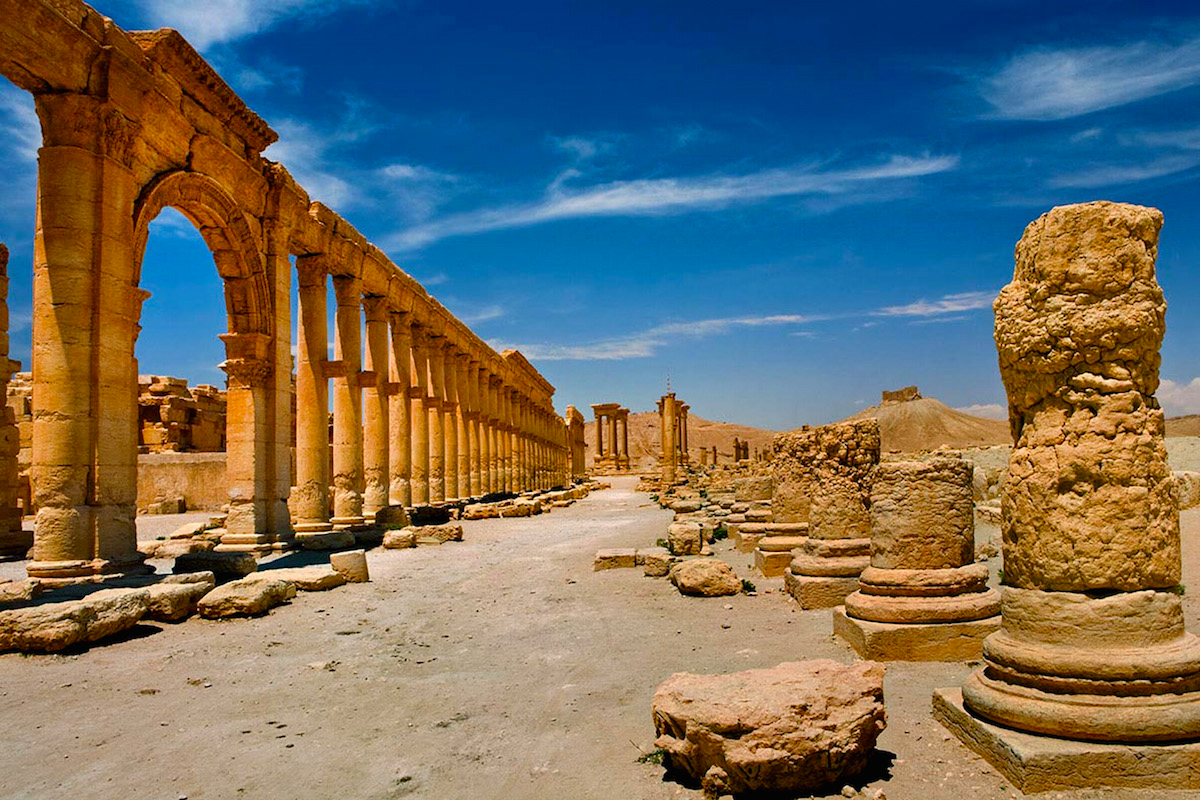Syria UNESCO Sites : Syria is a land steeped in history, culture, and archaeological marvels that reflect its role as one of the cradles of human civilization. Throughout millennia, Syria has been home to some of the world’s earliest cities, empires, and religious communities. This rich tapestry of heritage is beautifully represented in the Syria UNESCO Sites, which include ancient cities, castles, and cultural landmarks of immense global value.
Recognized for their outstanding universal significance, the Syria UNESCO Sites preserve the essence of civilizations that once flourished across the region. From Damascus to Aleppo and Palmyra, each location tells a story of resilience and artistry. Together, the Syria UNESCO Sites reveal the complex cultural exchanges and enduring legacies that have shaped Syria and the broader Middle East.
Syria UNESCO Sites | Quick Info
| No. | UNESCO Site | Inscribed | Era / Origin | Key Highlights | Significance |
|---|---|---|---|---|---|
| 01 | Ancient City of Damascus | 1979 | Over 4,000 years old; major Islamic, Roman, and Ottoman periods | Umayyad Mosque, Azm Palace, Citadel, Old Souks | One of the oldest continuously inhabited cities in the world; reflects religious and cultural coexistence |
| 02 | Ancient City of Bosra | 1980 | Roman Empire (1st–3rd centuries CE) | Roman Theater of black basalt, temples, baths, early Christian ruins | Exceptional example of Roman urban planning and coexistence of Roman, Byzantine, and Islamic cultures |
| 03 | Ancient City of Palmyra | 1980 | Greco-Roman & local (1st–3rd centuries CE) | Temple of Bel, colonnaded street, funerary towers, tombs | “Bride of the Desert”; once a rich caravan city linking Rome, Persia, and Asia |
| 04 | Ancient Village of Ma’loula | – | Early Christian period | Monasteries of St. Sergius & St. Thecla, Aramaic-speaking community | Unique for preserving Aramaic, the language of Jesus; major Christian pilgrimage site |
| 05 | Ancient City of Aleppo | 1986 | Islamic, Byzantine & Ottoman periods | Citadel, Great Mosque (Umayyad), souks, madrasas, hammams | Once a major Silk Road hub; showcases centuries of trade, faith, and architecture |
UNESCO World Heritage Sites in Syria
01- Ancient City of Damascus
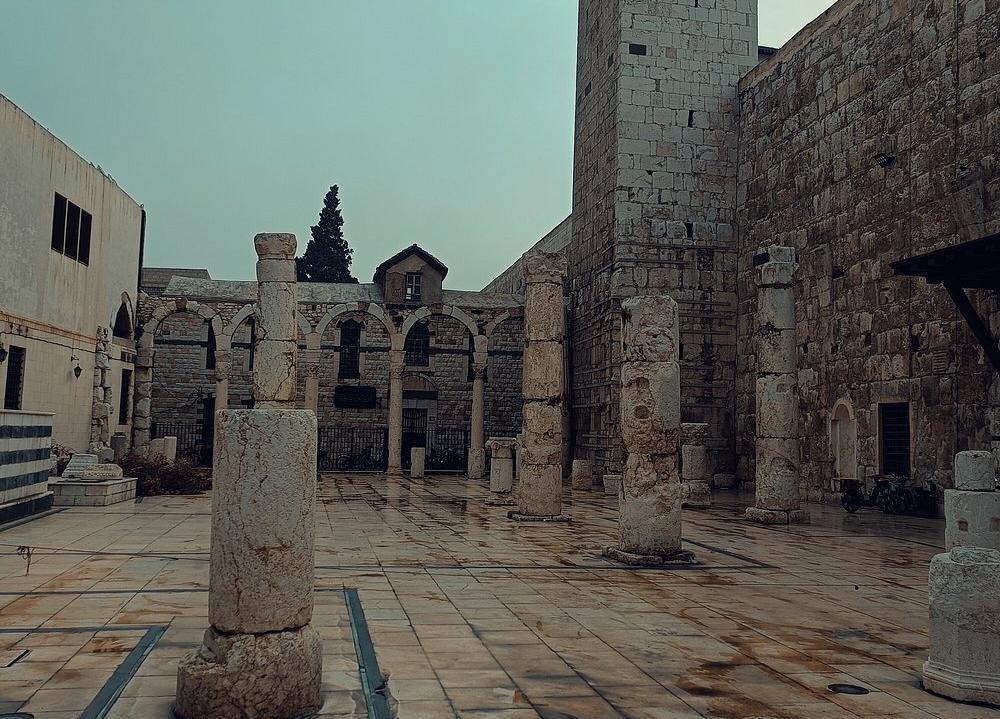
Damascus holds the distinction of being one of the oldest continuously inhabited cities in the world, with evidence of settlement dating back over 4,000 years. In 1979, UNESCO inscribed the Old City of Damascus on its World Heritage list, making it one of the most significant Syria UNESCO Sites that reflect the nation’s deep historical and cultural roots.
The Old City is a sprawling labyrinth of narrow alleys, ancient souks, historic mosques, churches, and palaces. Its most famous landmark is the Umayyad Mosque, one of Islam’s oldest and most revered mosques, originally built on the site of a Roman temple dedicated to Jupiter and later a Christian basilica. The mosque’s grand prayer hall, intricate mosaics, and towering minarets symbolize the city’s historical role as a religious and cultural crossroads within the Syria UNESCO Sites network.
Within the Old City, visitors also find the Azm Palace, a fine example of Ottoman-era residential architecture, with its elegant courtyards, elaborate woodwork, and decorative tilework. The Citadel of Damascus, although modified over the centuries, provides a glimpse into the city’s medieval military history. The Old City’s souks (markets) bustle with vendors selling spices, textiles, jewelry, and handicrafts—preserving centuries-old traditions of commerce and craftsmanship. The UNESCO designation helps protect these living cultural practices alongside the physical monuments, reinforcing Damascus as one of the most vibrant Syria UNESCO Sites today.
02- Ancient City of Bosra
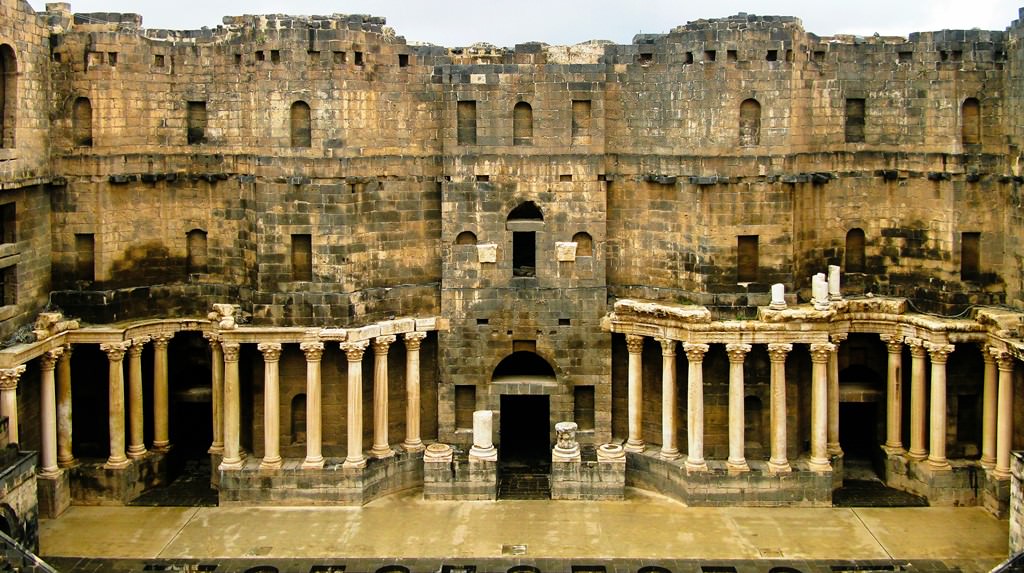
Located in southern Syria, Bosra was the capital of the Roman province of Arabia and an important stop on the caravan routes connecting the Arabian Peninsula to the Mediterranean. Recognized as one of the Syria UNESCO Sites since 1980, Bosra is famed for its remarkably well-preserved Roman Theater, capable of seating up to 15,000 spectators, and built entirely from black basalt stone.
The city is a testament to Roman urban planning and architecture, with its streets, baths, temples, and city walls providing a vivid picture of a prosperous provincial capital. Over time, Bosra also became a significant early Christian center, reflected in the presence of ancient churches and religious artifacts.
The site’s importance extends beyond archaeology, as it demonstrates the coexistence of Roman, Byzantine, and Islamic cultures, making it a valuable symbol of Syria’s multicultural heritage and one of the most historically rich Syria UNESCO Sites to explore.
03- Ancient City of Palmyra

Palmyra, often called the “Bride of the Desert,” is one of the most spectacular archaeological sites in the Middle East. Situated in the Syrian desert oasis, it flourished as a wealthy caravan city that linked the Roman Empire with Persia, India, and China.
Inscribed as one of the Syria UNESCO Sites in 1980, Palmyra’s ruins include a grand colonnaded street, the Temple of Bel—a magnificent sanctuary dedicated to the ancient Mesopotamian god Bel—and numerous funerary towers and tombs that display a unique blend of Greco-Roman, Persian, and local architectural styles.
Palmyra’s ruins tell the story of a cosmopolitan city rich in culture, commerce, and religious diversity. Despite suffering damage in recent conflicts, ongoing restoration projects highlight Palmyra’s enduring importance as one of the most treasured Syria UNESCO Sites, symbolizing resilience and shared human heritage.
04- Ancient Village of Ma’loula

Ma’loula, perched on the mountains northeast of Damascus, is one of the world’s few places where Western Aramaic—the language spoken by Jesus—is still used by locals. This linguistic and cultural continuity gives the village exceptional significance and makes it one of the most unique Syria UNESCO Sites.
Designated a UNESCO World Heritage Site as part of the “Ancient Villages of Northern Syria,” Ma’loula is famous for its rock-cut monasteries and churches, such as the Monastery of St. Sergius and the Monastery of St. Thecla. These ancient sanctuaries are carved into cliffs and adorned with early Christian frescoes and icons.
The village’s stone houses, steep narrow streets, and religious festivals attract both pilgrims and travelers, offering a glimpse into Syria’s enduring Christian heritage. Today, Ma’loula stands as a symbol of coexistence and resilience among the Syria UNESCO Sites, preserving faith, language, and tradition through the ages.
05- Ancient City of Aleppo
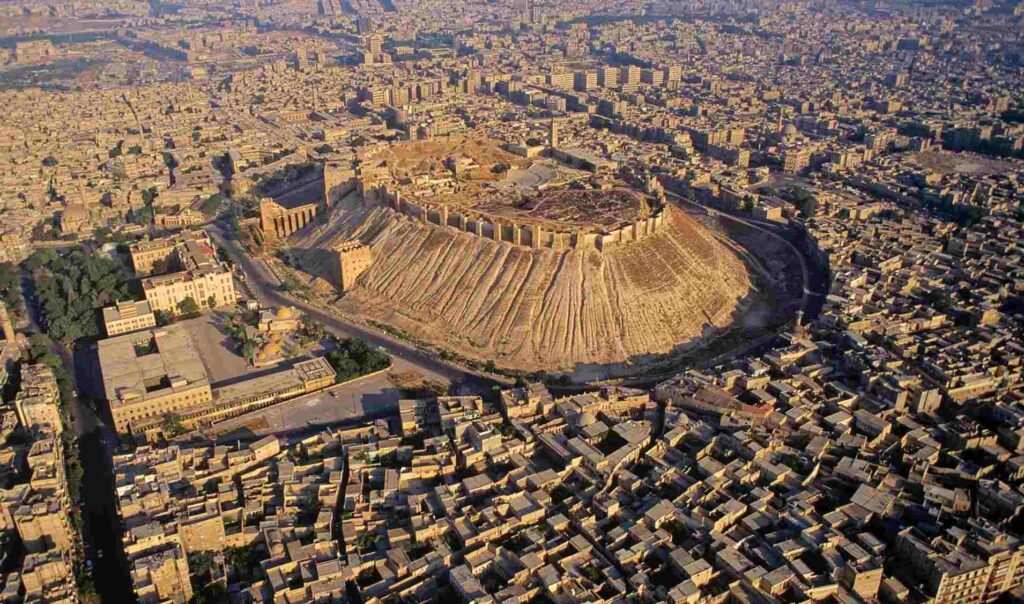
Aleppo’s Old City was inscribed on the UNESCO list in 1986 and is one of the most remarkable Syria UNESCO Sites, notable for its vast Citadel, medieval souks, mosques, madrasas (religious schools), hammams (public baths), and traditional houses featuring ornate wooden latticework known as mashrabiya.
For centuries, Aleppo served as a key commercial center on the Silk Road, connecting the Mediterranean with Asia. Its architectural heritage reflects a blend of Islamic, Byzantine, and Ottoman influences, forming a vibrant cultural mosaic that defines one of the most historically rich Syria UNESCO Sites.
Although much of Aleppo’s Old City suffered damage during recent conflicts, ongoing restoration initiatives aim to revive this ancient treasure and preserve its status as a thriving cultural and historical hub.
Tentative List of Syrian Sites for UNESCO Inscription
Besides these recognized sites, Syria has several locations on the UNESCO Tentative List that reflect the country’s rich cultural and historical fabric.
01- Ancient Villages of Northern Syria

This collection includes villages such as Bara, Serjilla, and Ma’loula. These villages provide rare examples of Byzantine rural architecture, featuring rock-cut churches, ancient water systems, and stone houses adapted to mountainous terrain.
The site highlights the rural lifestyle of ancient Syrians and their ingenious adaptation to environmental challenges. The villages are also important for their archaeological remains that illuminate early Christian history.
02- Crac des Chevaliers and Qal’at Salah El-Din
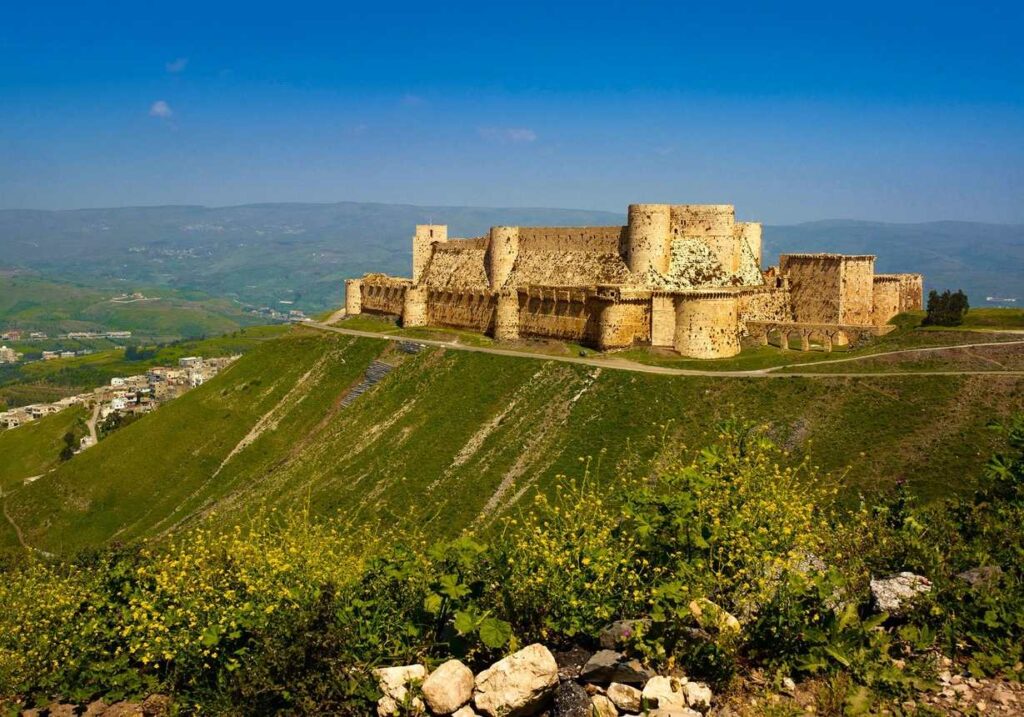
These two Crusader castles stand as some of the best-preserved examples of medieval military architecture in the world. Crac des Chevaliers is particularly famous for its massive walls, towers, and inner fortifications, symbolizing the power of the Crusaders in the Levant.
Nearby Qal’at Salah El-Din, named after the Muslim leader Salah ad-Din (Saladin), also boasts impressive fortifications. The castles represent the military and political struggles of the Middle Ages and are testimonies to the strategic importance of Syria during the Crusades.
03- City Walls of Damascus
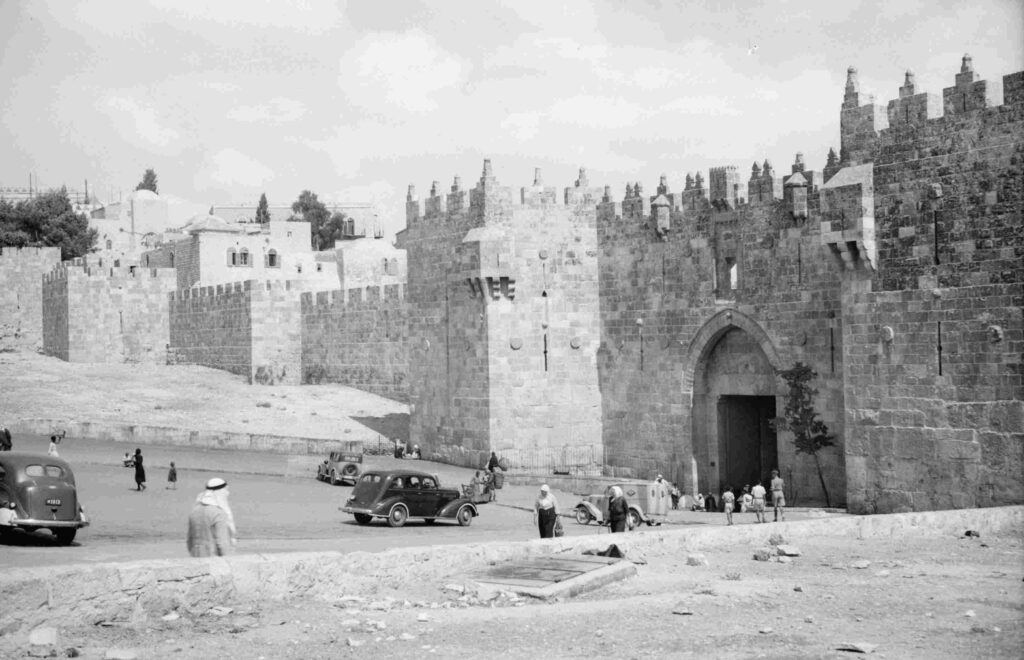
The ancient walls surrounding Damascus have origins dating back to the Roman and Byzantine periods and were further modified during the Islamic era. While the Old City is already listed, the walls themselves have been proposed as a separate UNESCO site because of their historical significance as defensive structures.
The walls illustrate the city’s evolution and the many civilizations that have shaped its urban landscape.
The Significance of Syrian UNESCO Sites
Syria’s UNESCO sites offer a comprehensive narrative of human civilization, showcasing transitions from ancient pagan empires to Christian and Islamic cultural flourishing. They are vital for understanding not only Syria’s past but also the history of the wider Middle East.
These sites are living witnesses to centuries of cultural exchange, trade, religion, and art. They connect present generations to their ancestors, preserving collective memory and identity.
Preservation Amid Challenges
The recent conflict in Syria has endangered many of these invaluable sites. Damage and looting have put Syria’s heritage at great risk. However, local and international organizations, including UNESCO, have been actively involved in documentation, emergency protection, and restoration projects.
Preserving Syrian cultural heritage is a global responsibility. These sites belong not only to Syria but to humanity as a whole.
Conclusion
Syria’s UNESCO World Heritage Sites and Tentative Listings are treasures that represent the cradle of civilization. From the ancient streets of Damascus to the desert grandeur of Palmyra, these Syria UNESCO Sites offer extraordinary insight into human history and culture. As Syria continues to rebuild and recover, protecting and celebrating its Syria UNESCO Sites will play a crucial role in preserving identity and inspiring future generations.
For travelers, historians, and art lovers, exploring Syria UNESCO Sites is a profound journey through time—one that reveals the resilience, creativity, and enduring beauty of Syria’s cultural landscape.
Finally.. If you have any questions, please contact us. To explore further, visit our Facebook Syria collection for rare images and cultural highlights.
Sources & References:
UNESCO – World Heritage Centre: https://whc.unesco.org
Archnet – Architecture & Heritage Database: https://www.archnet.org
World History Encyclopedia: https://www.worldhistory.org
Syrian Heritage Archive Project: https://syrian-heritage.org
Global Encyclopedia: Wikipedia



